In the hustle and bustle of everyday life, finding the time to nurture a garden might seem like an impossible dream. Yet, for both budding and seasoned gardeners, succulents offer a delightful solution, blending the beauty of nature with minimal care demands. These resilient plants, with their diverse shapes and colors, can transform any space into a serene oasis, providing a touch of tranquility amid the chaos. Whether you’re a novice eager to dip your toes into the world of gardening or a veteran looking for low-maintenance companions, succulents are here to offer a rewarding experience.
Understanding the charm and ease of succulent care is more than just a gardening trend; it’s a practical approach to bringing nature into your life without demanding much of your precious time. In this article, we’re excited to guide you through the essentials of succulent care, ensuring they thrive and flourish even with your busy schedule. You’ll discover how to provide the right light, master the art of watering, and select the perfect containers that contribute to their growth. With a few simple tips and tricks, you’ll cultivate a thriving collection that brightens your home and soothes your soul.
By the end of our journey together, you’ll have the confidence and knowledge to care for these delightful plants, making them a cherished part of your home or office. You’ll learn how to troubleshoot common issues, ensuring your succulents remain vibrant and healthy year-round. Our goal is to make succulent care accessible and enjoyable, empowering you to embrace gardening, no matter how packed your calendar may be. So, grab your gardening gloves and let’s embark on this succulent adventure, transforming your space with green wonders that promise joy with every glance.
Choosing Low-Maintenance Succulent Varieties
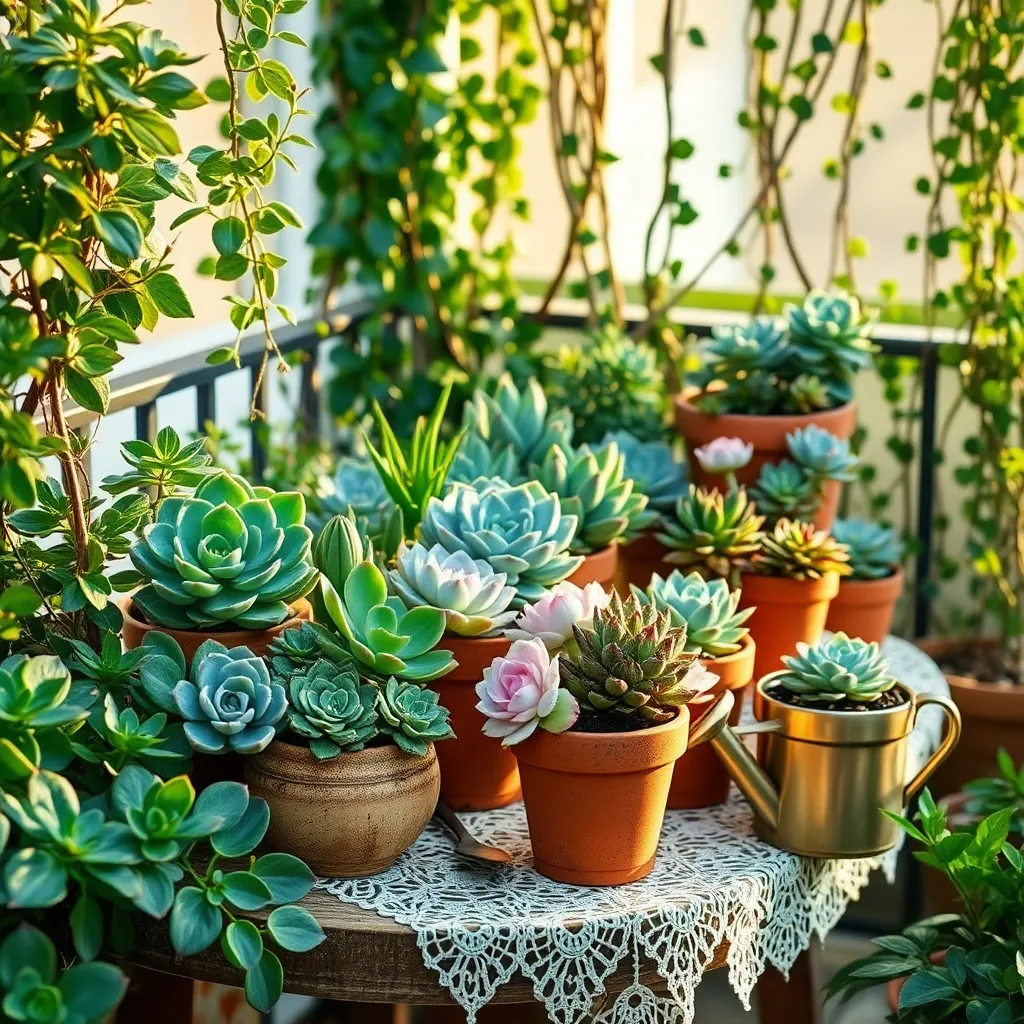
When selecting low-maintenance succulent varieties, consider opting for hardy types like Aloe and Haworthia. These succulents are not only visually appealing but also resilient to neglect, making them perfect for busy schedules.
Aloe vera is a popular choice due to its minimal care requirements. It thrives in well-draining soil, such as a cactus mix, and needs watering only once every two to three weeks.
Haworthia, known for its distinctive rosette shape, is another excellent option. It prefers indirect sunlight and can tolerate lower light conditions, making it versatile for indoor spaces.
For those new to succulent care, it’s beneficial to start with drought-tolerant varieties. These plants can survive longer dry periods, reducing the risk of overwatering, which is a common issue for beginners.
To enhance your success, use pots with drainage holes to prevent water from pooling at the bottom. This simple step is crucial for maintaining the health of your succulents and preventing root rot.
Advanced gardeners might experiment with propagating succulents to expand their collection effortlessly. By gently removing leaves and allowing them to callous before planting, you can create new plants with minimal effort.
Ideal Light Conditions for Growth
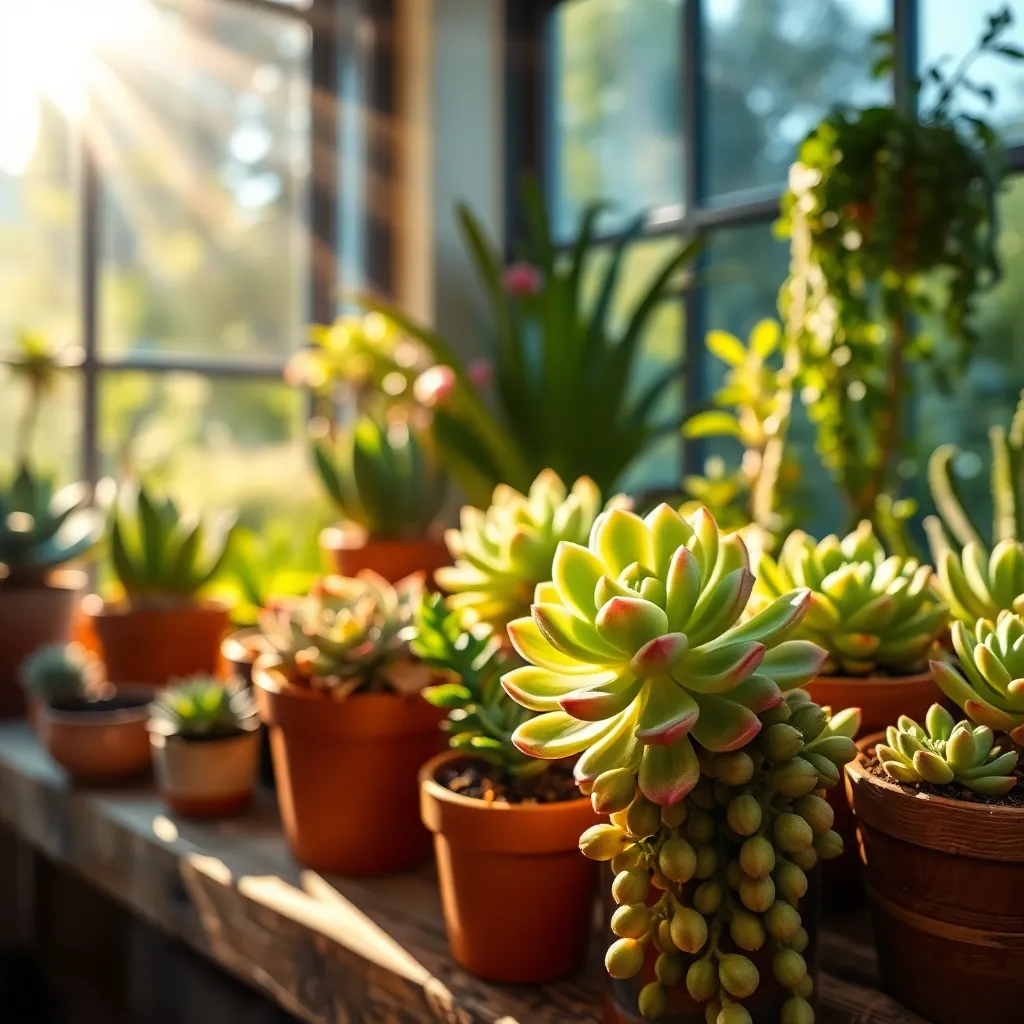
When it comes to succulents, understanding their light needs is crucial for their thriving growth. Most succulents prefer bright, indirect sunlight, making a sunny windowsill or a location with filtered light ideal.
For beginners, placing succulents in a spot where they can receive about six hours of sunlight per day is a good rule of thumb. If your home doesn’t get much natural light, consider using a grow light to supplement their needs, especially during winter months.
Advanced gardeners might experiment with different light intensities to enhance coloration in succulents. For instance, some varieties like Echeveria display more vibrant colors when exposed to more direct light, but be cautious of scorching the leaves.
To optimize growth, rotate your succulents periodically to ensure even light exposure on all sides. This simple practice prevents them from leaning towards the light source, maintaining their aesthetic balance and health.
Simple Soil Mix and Potting Tips
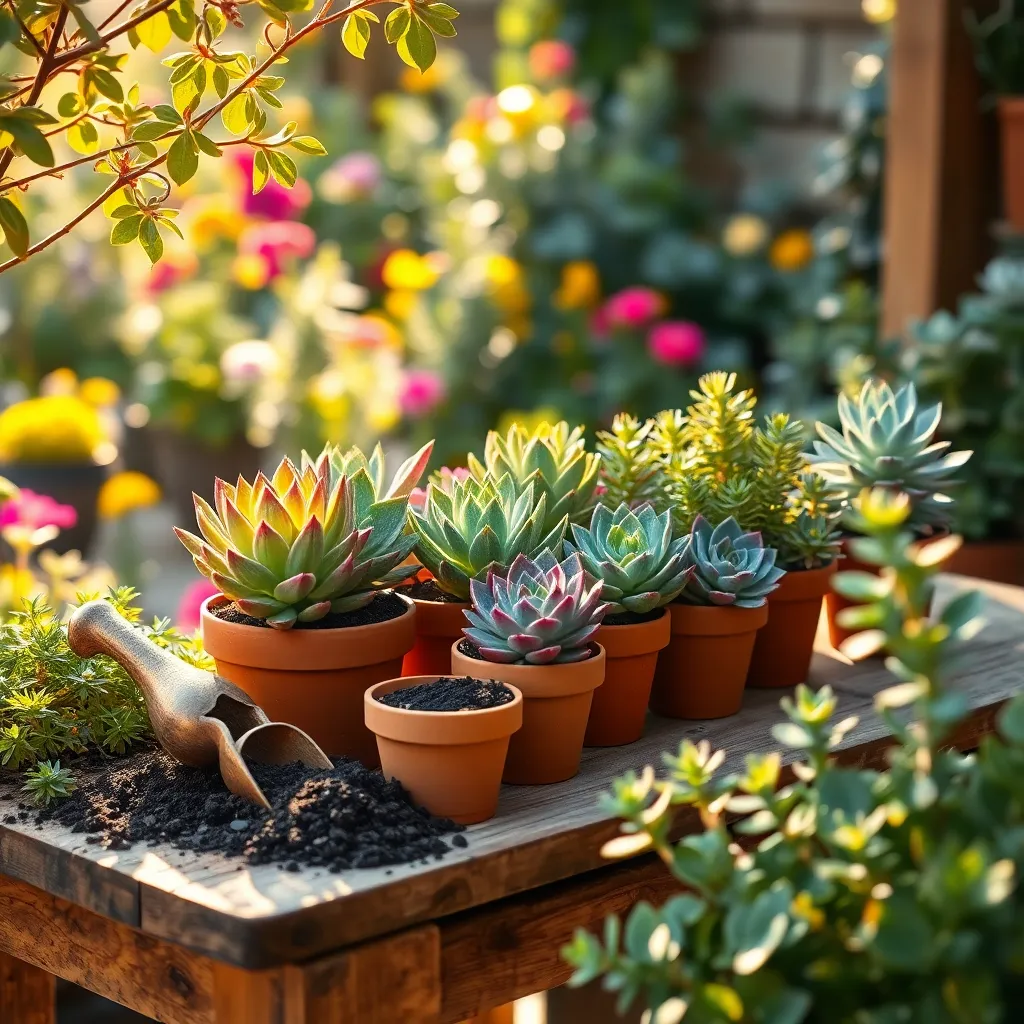
Creating a simple soil mix is essential for succulent success. Succulents thrive in a well-draining medium, which helps prevent root rot and other moisture-related issues.
To make a basic soil mix, combine equal parts of potting soil, coarse sand, and perlite. This mixture ensures that your succulents receive adequate drainage while retaining enough nutrients for growth.
For those looking to enhance their soil mix, consider adding small amounts of crushed pumice or gravel. These additions increase aeration and provide extra drainage, which is crucial for healthy succulent roots.
When it comes to potting succulents, choosing the right container is just as important as the soil mix. Opt for pots with drainage holes to allow excess water to escape, preventing waterlogged roots.
If you prefer decorative pots without drainage, it’s advisable to create a drainage layer at the bottom using pebbles or small stones. This layer helps reduce the risk of overwatering by allowing water to settle away from the roots.
Repotting succulents can rejuvenate their growth, especially if they’ve been in the same soil for over a year. When repotting, gently loosen the roots and remove any old soil to give your succulent a fresh start in a new, nutrient-rich mix.
Effortless Watering Methods Explained
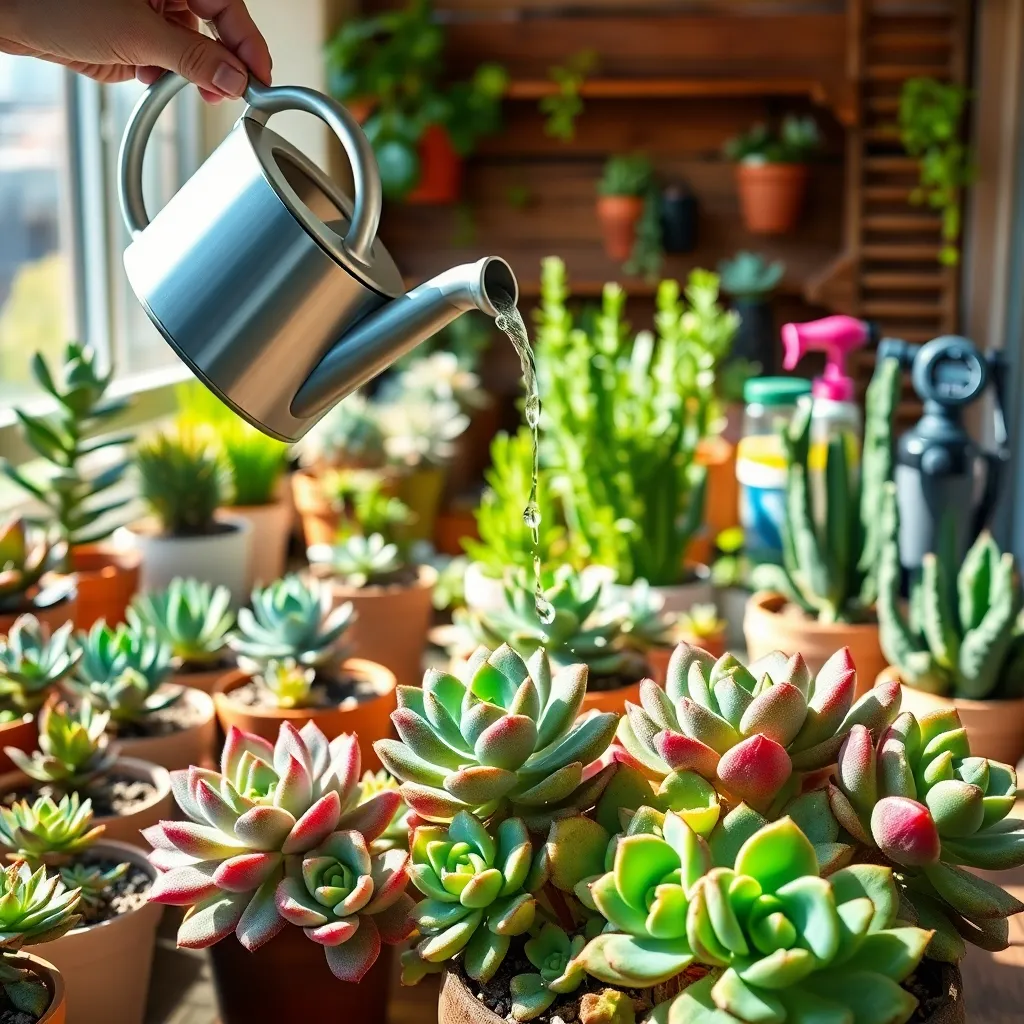
One of the most effective ways to water succulents is through the soak and dry method. This involves thoroughly watering the plant and then allowing the soil to dry out completely before the next watering session.
For busy gardeners, using a self-watering pot can be a game-changer. These pots have a reservoir at the bottom, which keeps the soil moist without the risk of overwatering.
Another effortless method is installing a drip irrigation system that can be set on a timer. This system delivers water directly to the roots, ensuring your succulents receive consistent hydration without manual intervention.
Group your succulents in a humidity tray to provide them with a bit of extra moisture. Fill the tray with pebbles and water, allowing the evaporation to gently increase humidity around the plants.
Quick Solutions for Common Issues
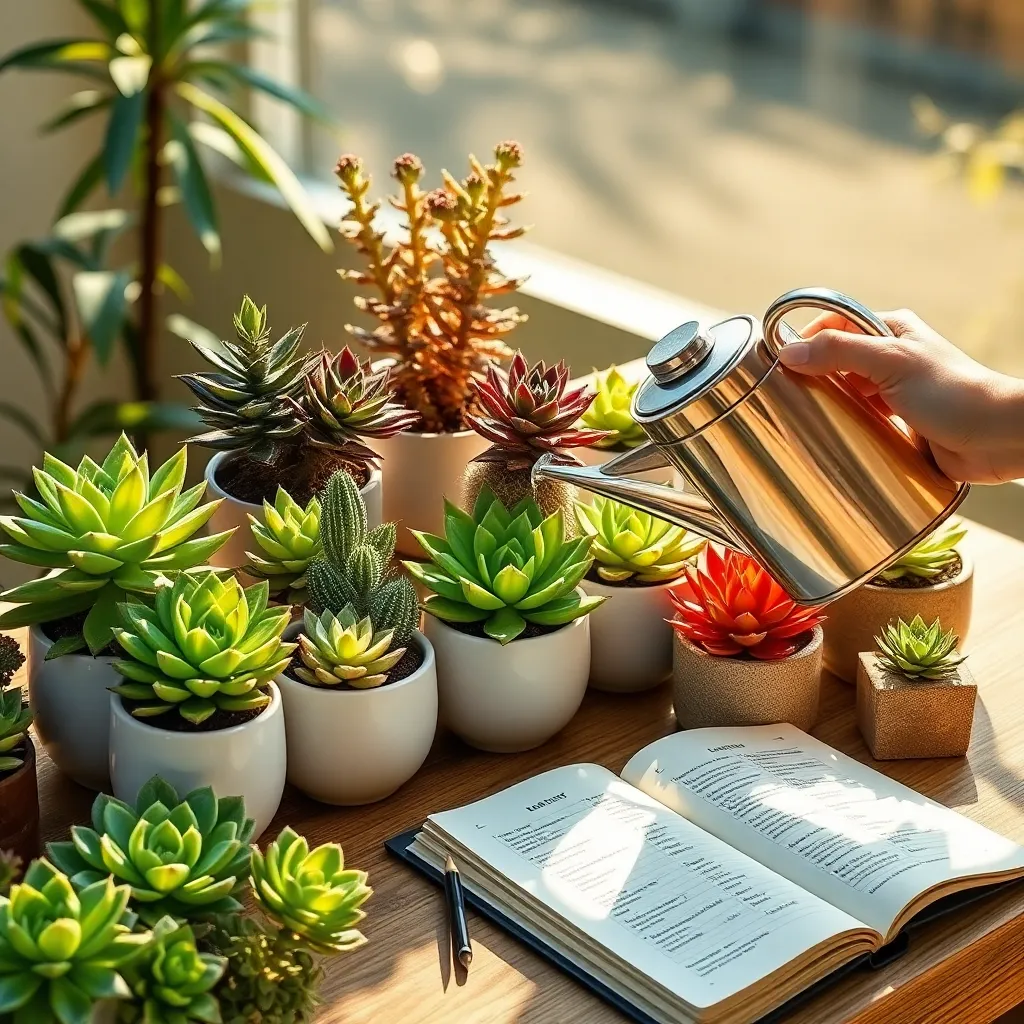
Succulents are generally low-maintenance, but they can sometimes face issues like overwatering. To quickly resolve this, ensure your succulents are planted in a well-draining soil mix, ideally a cactus or succulent potting mix, and that their pots have drainage holes.
A common problem is pests such as mealybugs, which can harm your succulents. Combat these pests by spraying a solution of water and a few drops of dish soap onto the affected areas, or use a cotton swab dipped in isopropyl alcohol to remove them.
If you notice your succulent leaves turning brown or mushy, it might be due to rot from excess moisture. To address this, carefully remove the damaged leaves and let the plant dry out in a bright, indirect light area, before resuming a more controlled watering routine.
Sunburn is another issue that can affect succulents, especially if they’re exposed to direct sunlight for too long. To prevent this, gradually acclimate your plants to direct sunlight by increasing their exposure time over several days, or move them to a spot with filtered light.
Conclusion: Growing Success with These Plants
In nurturing both relationships and succulents, simplicity and consistency reign supreme. We journeyed through five key concepts: understanding your plant’s unique needs, establishing a regular care routine, the power of thoughtful communication (even with greenery!), creating a nurturing environment, and embracing patience as both plants and relationships flourish over time. These principles not only keep your succulents thriving but can also enhance your relational bonds, making them more resilient and rewarding.
As a tangible next step, choose one relationship in your life today and apply a “succulent care” approach. Perhaps it’s a simple act of appreciation or setting aside uninterrupted time to connect. By doing so, you begin the process of nurturing and growth.
Remember, relationship success is a journey, not a destination. Bookmark this article now, so you can revisit these concepts whenever you need a gentle reminder of the harmony between plant care and human connection. Let these small, intentional actions lead to a thriving relationship garden, where love and growth are plentiful. Together, let’s cultivate a future where our connections, like our succulents, stand vibrant and strong.

